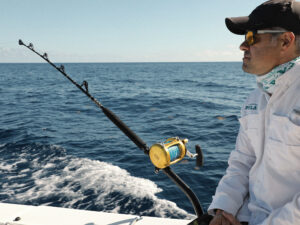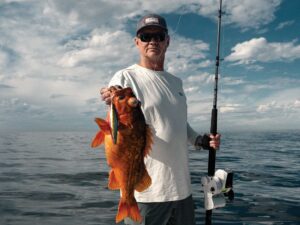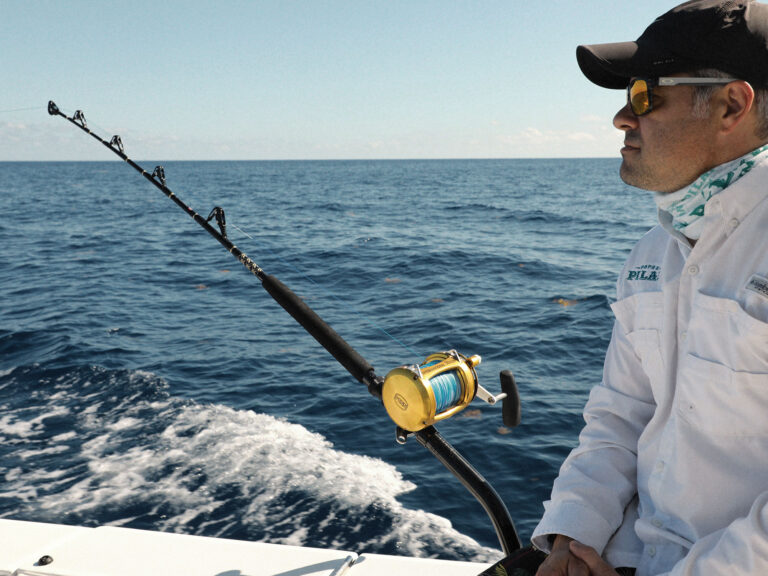
Fishing enthusiast and professional fishing photographer Pat Ford, based in Miami, offers two disparate realities of fishing for king mackerel. “Kings can be a real pain in the ass on heavy tackle. But on light tackle, they’re a whole lot of fun.”
But that fun is seldom realized by anglers. As abundant and available as kingfish are, I bet the majority caught are outmatched on tackle too heavy to allow lightning-quick runs. That’s particularly unfortunate. “The kingfish is an exciting gamefish that can be successfully targeted without having to run far, making them accessible for even smaller boats,” says Capt. Kyle Applefield, a kingfish specialist who fishes the St. Petersburg, Florida, area of the Gulf Coast.
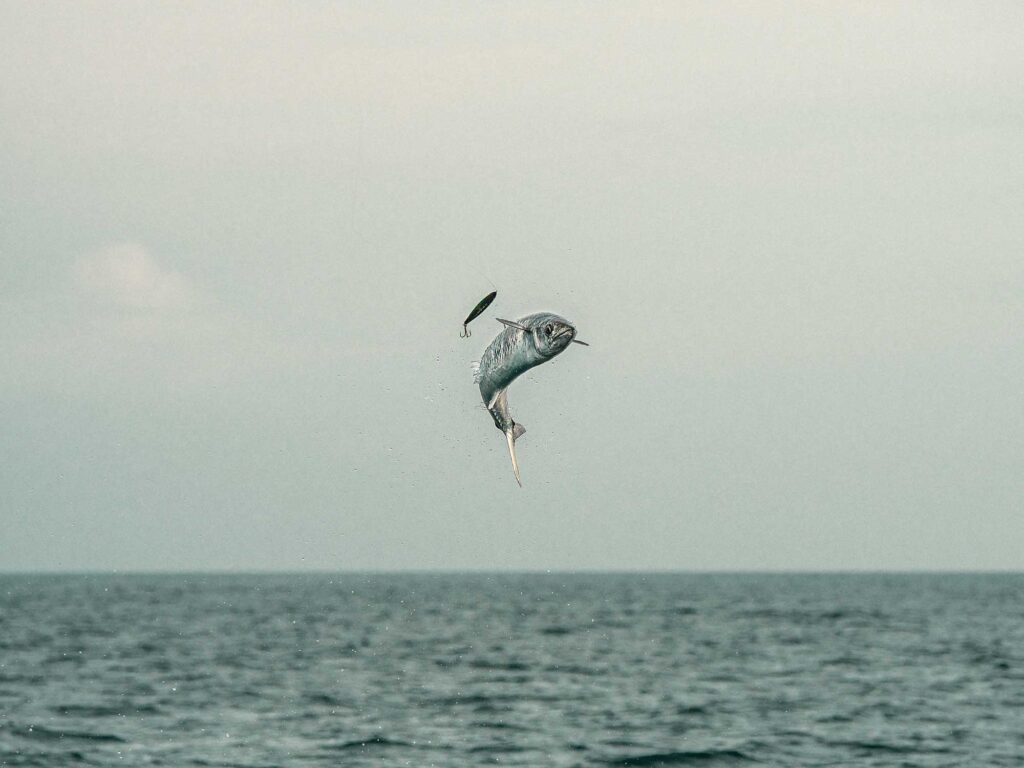
A Light-Tackle Star
Kings of modest size are frequently caught on tackle too heavy for them. That’s because so often these fish are hooked on gear intended to catch other—often larger—coastal pelagic and bottom species, such as snapper, amberjack, blackfin tuna and cobia. Since they’re not the primary target when hooked on this tackle, which is pretty often given how widespread and abundant the species is, kings aren’t terribly exciting. In that circumstance, kings are a nuisance, Ford says.
But whatever their size, kingfish are pound for pound a fast-moving predator with sizzling speed bursts when chasing prey—or when hooked on tackle appropriate to their size. Most often, when anglers recount a great fight from a kingfish, it’s a really big king, large enough to show its speed on heavier tackle. Thus, Ford gets excited when he recalls hooking a king on 20-pound spin: At 60-plus pounds, it was large enough that, “It tore me up!” he says. “That was fun!”
Of course, kings of 10 to 15 pounds are far more numerous and easier to come by than 60-pounders. Anglers hooking those smaller fish on 20- to 30-pound line won’t enjoy many exciting moments. However, start hooking those same kings on 8- or 10-pound braid and you’ll have your hands full—and give the kingfish a chance to show itself as the speedster it is.
“I rate the king mackerel as one of the most perfect light-tackle species. I’ll get into school kings with 8-pound-test and have a ball,” says George Poveromo, a television host and longtime producer and host of the Salt Water Sportsman National Seminar Series.
“We’ve had days where we’ll start by catching snapper, then get into kings and bonito,” says light-line specialist Capt. Mark Hotze in Destin, Florida. “Then we’ll ask if they want to make the drift again to try for more snapper, and the anglers will say, ‘Hell no—that last king on the spinning rod was awesome.’”
He says they like people to experience that first run on lighter gear: “[That’s when] there’s no stopping a kingfish. It’ll go where it wants.”
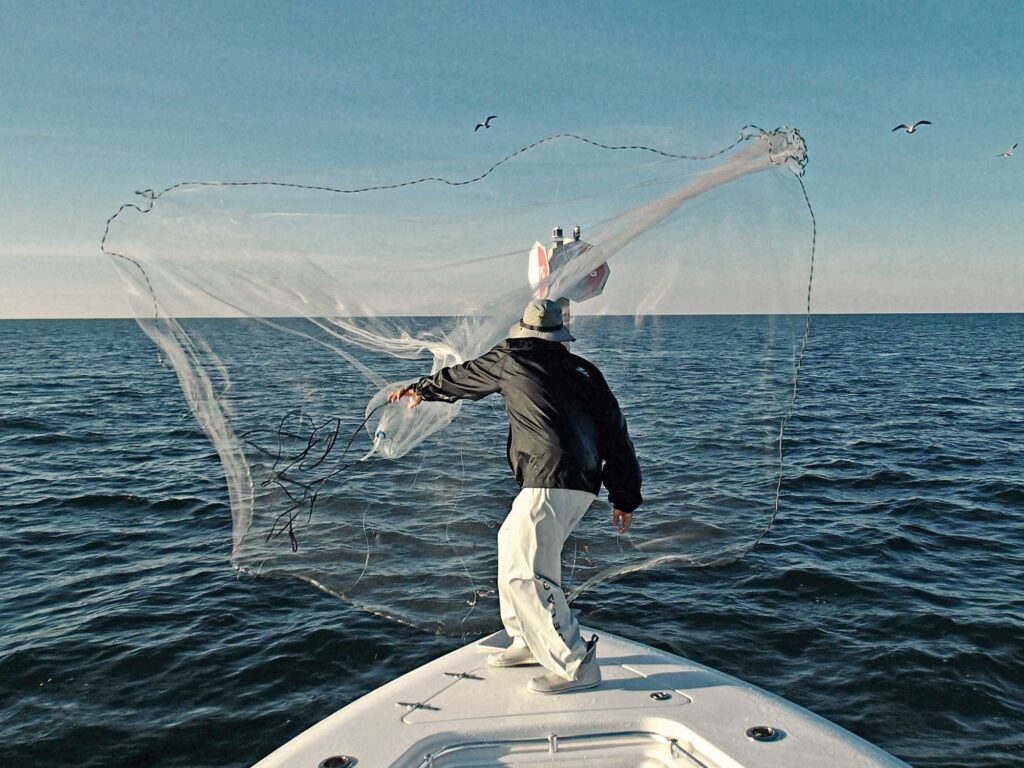
Gear Down
All this begs the question: How light to go? I spoke with several skippers who consider 20-pound braid on a 4000-size spinner to be light tackle—but they acknowledged that’s for their anglers, many of whom aren’t particularly experienced at catching saltwater gamefish. What about for themselves, or for anglers who customarily fish really light gear?
“Then 8-pound braid on a 3000-size reel is completely realistic, for sure,” says Tom Rowland, an angler, guide and TV personality based in Key West, Florida.
“Really, any gear that can hold at least 250 yards of line and withstand a long, blistering run at 2 to 4 pounds of drag can handle kingfish,” Applefield says.
Many anglers only experience kings by hooking big smokers on heavier gear. Then they are surprised and thrilled when they hook a larger specimen on one of their 20- to 30-pound outfits and can’t just crank it in. For example, saltwater fishing enthusiast Paul Michele of Melbourne, Florida, relates a recent battle when a 52-pound king mackerel nailed a blue runner he and his wife, April, were trolling off the beach among his more memorable catches.
“That fish absolutely smoked April!” Michele says. “Dumped most of the 25-pound line off the spool before we could slow it. Her biggest king by far, and she loved it.”
Kings of that size and larger are a lot harder to come by than school-size fish, but hooking a 15-pounder on an ultralight with 8-pound braid could lead to the same excitement and challenge that Michele described.
Rowland points out one key reason that makes kings ideal for light-line enthusiasts: “A species that [when hooked] runs primarily out and away rather than heading down (such as fish that live in the reef) is a really good target for light tackle.” That puts kings in the same class of light-line candidates as sailfish, but not so much as tuna, Rowland says.
Read Next: How to Catch King Mackerel on Fly Tackle

Skip the Wire
Trolled diving lures can be a reliable way to find and catch kings, says Poveromo, who likes a Rapala CD15 or slightly smaller. But it’s hard to beat live pilchards or herring for school kings. These baits are fished with a sinker or no weight from an anchored or drifting boat, or even slow-trolled. For the trophy kings in the smoker category, bigger baits are in order, with live blue runners the most commonly used. Hardtails are responsible for more big kings (on the tournament circuit, notably) than any offering.
Traditionally, anglers haywire a single-strand wire trace onto a hook (often with a trailer hook such as a treble, particularly on larger baits including ribbonfish). But increasingly popular with large pilchards or menhaden is a double-hook rig using chained O’Shaughnessy long-shank hooks, where the point of the upper hook is fitted through the eye of the lower hook. Fish it without wire so the fluorocarbon or mono leader is tied directly to the top hook. Many experts claim that wire inhibits strikes in a way that fluoro doesn’t.

This double-hook rig is Applefield’s choice, and I saw firsthand just how effective that rig can be on a recent outing with him. Applefield, like many experts, relies on the rig for live baits (as long as they’re not too large). While inevitably we had some cutoffs, the length of the hooks kept the leader well out of range of most kings’ sharp teeth. These double-hook rigs have the benefit of being simpler and quicker than rigging with an additional wire bite leader.
To some extent, kings are where you find ’em and when you find ’em, since these migratory coastal fish are seasonal and prevalent in many areas in spring and fall as they move north and south. In South Florida and down to Key West, winter is prime time. In the mid-Atlantic, the warming waters of summer draw kings north. Some of the biggest kings anywhere hang out year-round in the western Bahamas but particularly in the summer, Poveromo says.
“I don’t think those fish migrate,” he says. “They look different than the big kings we get off Florida—short and stocky.” He also advises anglers throw them back because they can be filled with ciguatoxin.
In some areas, a great way to find kings is to head to where they’ve already been found. “A lot of times, the commercial kingfish fleet will show you where the fish are,” Rowland says. “For example, off the Marquesas [west of Key West], you can sometimes see 15 boats trolling an area,” offering a pretty clear signpost to follow, he says.

